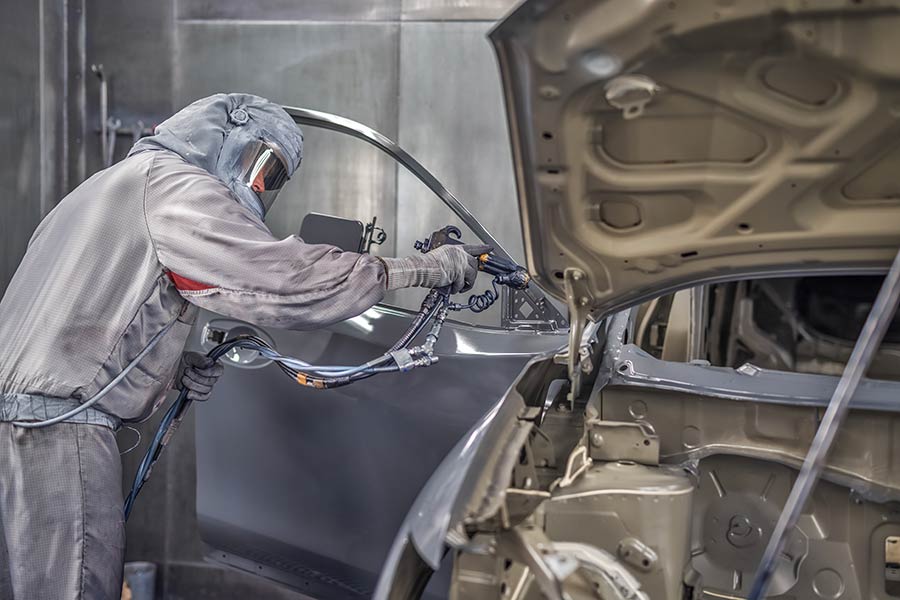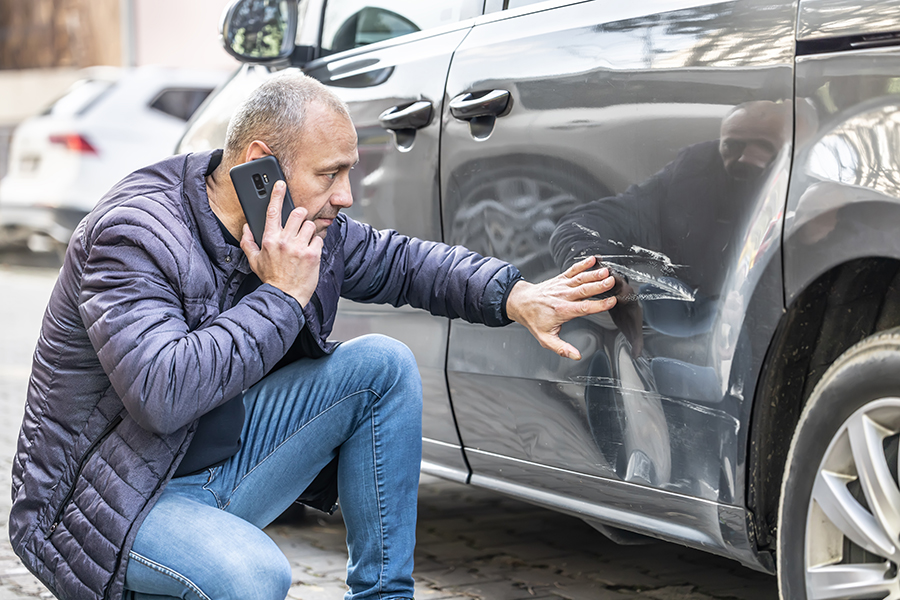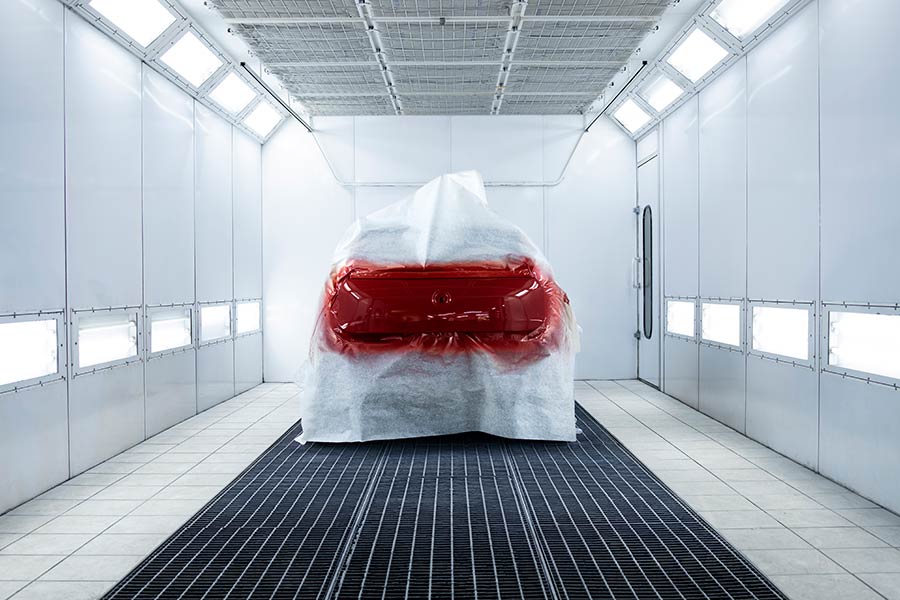Reviving a classic car or sprucing up your daily ride, full auto body restoration is no small feat. It's where the magic happens, transforming rusted relics into gleaming beauties. But it's not just about slapping on some paint and calling it a day. The journey from battered to breathtaking requires skill, patience, and a keen eye for detail. Whether you're dreaming of cruising in a shiny classic or simply want to restore your vehicle's former glory, understanding the ins and outs of full auto body restoration can turn that dream into reality.
Key Takeaways
-
Full auto body restoration is a step-by-step process that requires patience, skill, and attention to detail, starting from metalwork to reassembly.
-
Learning basic metalwork techniques is crucial for tackling rust and damage, ensuring a solid foundation for the rest of the restoration.
-
Proper preparation before painting, including sanding and priming, is key to achieving a flawless finish that lasts.
-
The painting process not only restores the car's appearance but also protects it from future rust and damage; choosing the right paint and method is essential.
-
Reassembling the vehicle carefully by following a guide or manual ensures that all parts function correctly and safely.
-
Regular maintenance after restoration helps preserve the car’s condition, preventing the need for extensive repairs in the future.
Restoration Overview
Initial Assessment
The first step in full auto body restoration is a thorough initial assessment. Professionals examine the vehicle to pinpoint every issue. They document all damage and areas that need work. This helps them understand the project's scope.
During this phase, it's crucial to identify rust, dents, and any mechanical problems. The assessment guides the entire restoration process.
Planning Process
After assessing, planning begins. A detailed plan outlines each step needed to restore the car. Tasks get prioritized based on their importance and impact on the vehicle's performance and appearance.
Experts estimate how much time and money the project will require. This helps owners prepare for the costs and duration of the restoration.
Disassembly Steps
Disassembly is next. Each part of the car is carefully removed and inspected for damage or wear. Workers label and organize these parts to ensure they go back in the right place.
Photos are taken throughout this process. They serve as a reference during reassembly, ensuring everything fits perfectly.
Tools and Materials
Restoring a car requires specific tools and materials. For disassembly, repair, and painting, professionals use a variety of equipment. They also need materials for treating rust and applying body filler.
Choosing quality brands is essential for reliability and durability in auto restoration. High-quality tools and materials make a significant difference in the final outcome.
Metalwork Techniques
Rust Removal
Finding and fixing rust is crucial in auto body restoration. Experts use special tools to spot rust, even in hard-to-see places. They then carefully remove the rusted metal without harming the surrounding areas. This might involve sanding or using chemical rust removers. It's vital to get rid of all the rust before moving on. If any is left behind, it can ruin the restoration work later.
Dent Repair
Fixing dents starts with smoothing them out. Professionals might tap them from behind or pull them out using specialized tools. For tiny imperfections, body filler becomes necessary to create a smooth surface. This step requires a lot of patience and precision. The goal is to make sure the repair blends seamlessly with the rest of the body.
Panel Replacement
etimes, a panel is too damaged and must be replaced. Knowing when to replace rather than repair is key. Removing old panels involves unscrewing or cutting them out, while fitting new ones needs careful alignment. It's essential for the new panels to match perfectly and be securely attached to avoid any issues down the road.
Preparing for Paint
Surface Preparation
Getting a car ready for paint starts with thorough cleaning. All dirt, grease, and old paint must go. Sanding comes next. It makes the surface smooth and helps new paint stick better.
A dust-free area is crucial. Dust ruins fresh paint jobs. So, clean the workspace well.
Bare metal spots need primer. It stops rust and makes the paint look even.
Primer Application
Primer acts as a base for the paint. There are different types, like epoxy and urethane. Each serves a specific purpose. Epoxy is great for rust prevention, while urethane is known for its durability.
Applying primer evenly is key. Use steady, back-and-forth motions to avoid drips or thick spots.
Curing times between coats matter a lot. They ensure the primer sets properly before more layers add on.
Sanding Techniques
Sandpaper comes in many grits. Lower numbers are coarser; they're good for removing old paint or smoothing rough areas. Higher numbers are finer, perfect for finishing touches.
Wet sanding gives an even smoother finish than dry sanding does. It also reduces dust.
Even pressure during sanding avoids grooves in the surface. These grooves can show through the final paint job.
Painting Process
Color Selection
Choosing the right color for your car is crucial. It can change the entire look and even affect its value. If you want to match the original color, it's best to find the exact code. This code is often in the car's manual or on a sticker inside the door.
For those thinking of a new color, consider how it will look on your car. Some colors are timeless, while others might not be in style in a few years. Always check color charts and samples before making a decision. They help you see what the color looks like in different lights.
Paint Application
After preparing for paint, as discussed earlier, setting up your workspace is next. Make sure it's clean and dust-free. Wear safety gear to protect yourself from fumes.
Applying paint evenly is key to avoiding runs. Use a spray gun and move it steadily over the surface. Multiple thin coats are better than one thick coat. This method helps prevent drips and ensures even coverage.
Finishing Touches
A clear coat adds protection and brings out the shine in your car's paint job. It's an essential step for durability and aesthetics.
Polishing after the clear coat cures gives your car that high-gloss finish everyone loves. Lastly, reassemble any trim or hardware removed before painting. This step requires patience but is rewarding when you see the final result.
Reassembly Guide
Part Installation
After the painting process is complete, it's time to put everything back together. It's crucial to handle each part with care to avoid scratches or damage. Ensuring that every piece fits perfectly is not just about aesthetics; it’s about safety too.
You should also take this opportunity to replace any worn or damaged hardware. New nuts, bolts, and washers can prevent future issues. This step is vital for maintaining the integrity of your restoration.
Detailing Interior
Once the exterior shines, focus on the interior. Use quality cleaners and conditioners suited for your car's materials. Leather requires a different treatment than fabric upholstery.
For deep cleaning carpets and seats, consider using a steam cleaner. It removes dirt without harsh chemicals. Don't forget to clean hard-to-reach areas like air vents and under the seats. These spots often hide dust and debris.
Final Inspections
Before you hit the road, conduct thorough inspections. Your checklist should include mechanical components, electrical systems, and overall appearance. Test driving is essential for ensuring everything operates smoothly.
Consider getting a professional inspection too. They can offer an unbiased view of your work and may catch things you missed.
Troubleshooting Tips
Addressing Rust Issues
Rust can turn a beautiful car into a problem. Immediate action is key. For long-term solutions, applying rust inhibitors and regular inspections help. They keep rust from coming back.
Treatments like rust converter or encapsulator work well for areas prone to rust. These products seal the metal, keeping moisture and air out. It's vital to treat rust spots as soon as they appear. This prevents them from spreading.
Fixing Dents and Scratches
For small dents and scratches, DIY kits are handy. They can fix minor issues without much cost. However, deep dents or large scratches need professional skills. Experts have the right tools and experience.
Protecting the repaired area from elements is crucial. After fixing a dent or scratch, apply a clear coat. This shields the repair from water and sun, preventing further damage.
Solving Paint Problems
Paint issues like bubbling, peeling, or fading are common but fixable. Each problem has its solution, but sometimes you'll need professional help.
Proper surface preparation is essential to avoid paint problems. Clean and sand the surface before painting to ensure the paint sticks well. For severe issues like peeling, a professional respray might be necessary.
Restoration Challenges
Common Obstacles
Finding the right parts for a full auto body restoration can be like searching for a needle in a haystack. Parts availability is often the biggest hurdle, especially for rare or older models. Enthusiasts may spend months or even years hunting down the perfect piece.
Another challenge comes from unexpected issues that lurk beneath the surface. Hidden rust can eat away at vital components, turning what seemed like a straightforward project into a major overhaul. Electrical problems are equally tricky, as they require not just mechanical know-how but also expertise in automotive electronics.
Staying motivated and on budget adds another layer of difficulty. It's easy to lose steam when progress stalls or costs balloon unexpectedly. Tips for navigating these waters include setting small, achievable goals and celebrating those victories along the way.
Solution Strategies
To overcome these obstacles, looking beyond traditional part suppliers is key. Engaging with online forums and enthusiast groups can uncover valuable sources for hard-to-find parts. Sometimes, another hobbyist might have just what you need or offer advice on where to look next.
Setting realistic goals and timelines helps manage expectations and keeps the project moving forward. It's important to remember that restoration is not a race. Taking time to do things right pays off in the long run.
Flexibility in planning and execution cannot be overstated. Solutions often require thinking outside the box or adapting strategies as new challenges arise. This approach ensures that when unexpected issues pop up, they become opportunities for learning rather than roadblocks.
Maintenance Advice
Preventive Care
After tackling the challenges of full auto body restoration, it's crucial to focus on preventive care. This ensures your vehicle remains in pristine condition. Regular maintenance is key. It includes simple tasks that make a big difference over time.
Waxing your car regularly can protect its paint from the elements. This acts as a barrier against sun damage and rust. Speaking of rust, applying a rust prevention treatment is another vital step. It keeps corrosion at bay, especially in older cars.
Storing your vehicle properly cannot be overlooked. If possible, keep it in a garage or under a carport. This shields it from harsh weather and prevents unnecessary wear and tear.
Regular Checkups
Setting up a schedule for routine inspections is next. Aim for at least twice a year. These checkups are your chance to catch small issues before they turn into bigger problems.
During these inspections, focus on fluid levels and tire condition. These are often the first indicators of potential trouble. Also, checking the brakes and suspension can save you from future headaches.
Regular checkups aren't just about preventing issues; they're an investment in your vehicle's longevity. They ensure that the hard work put into its restoration pays off for years to come.
Final Remarks
Diving into full auto body restoration is like piecing together a complex puzzle where each section from metalwork to maintenance plays a crucial part. You've got the lowdown on everything from hammering out dents to slapping on that final coat of paint. Remember, it's not just about making your ride look pretty—it's about breathing new life into it, ensuring it turns heads and purrs like a kitten on the road.
Now it's your turn to roll up your sleeves and get cracking. Whether you're tackling a classic car restoration project for the first time or you're a seasoned pro looking for new tricks, we've armed you with the know-how to face those challenges head-on. Don't let bumps in the road slow you down. Grab your tools, rally your spirits, and let's bring those beauties back to their former glory. Ready, set, restore!
Frequently Asked Questions
What is full auto body restoration?
Full auto body restoration breathes new life into your car, taking it back to its original glory. It's like turning back the clock on your ride, making it shine and perform as if it just rolled off the assembly line.
How long does a full auto body restoration take?
It's like marinating a good steak; it can't be rushed. Expect anywhere from a few months to over a year, depending on the car's condition and the restoration depth.
What are some common challenges in auto body restoration?
Imagine trying to solve a puzzle where some pieces are missing or damaged. Challenges include finding authentic parts, tackling rust and corrosion, and matching original paint colors accurately.
Can I do any part of the restoration myself?
Absolutely! Think of it as being the sous-chef in your own kitchen. You can take on simpler tasks like disassembly or sanding with some basic tools and patience, leaving the heavy lifting to the pros.
How much does a full auto body restoration cost?
It varies widely, kind of like asking how much a house renovation costs. It could range from a few thousand dollars for minor work to six figures for a top-to-bottom restoration of a rare classic.
What should I look for in a restoration shop?
Think of it as finding a tailor for a bespoke suit. Look for expertise, reputation, transparency in pricing, and above all, passion for bringing cars back to their former glory.
How do I maintain my car after restoration?
Treat it like you would a cherished heirloom. Regular maintenance checks, proper storage away from harsh weather, and gentle use will keep your restored beauty looking its best for years to come.
















